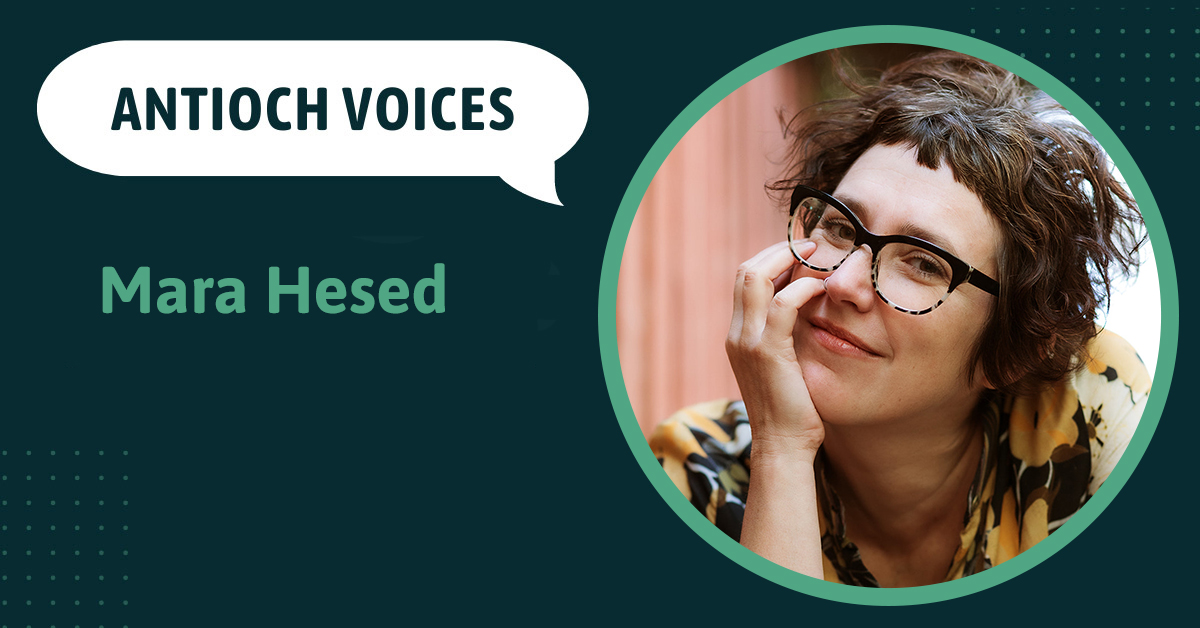This essay is part of Antioch Voices, a forum for Antiochians to speak out about issues important to them. Opinions expressed here belong to the author alone and do not necessarily reflect the official position of Antioch University. If you’d like to share your own voice, the first step is to send a short description of what you are planning to write about to [email protected].
The Lion Is Cute And Treacherous
One of my favorite sounds is children at play. Coming from a background in theater, my partner and I have always valued play. Our kids are both encouraged to do a lot of it, which I believe serves them. I love it when I catch a glimpse into their young minds by eavesdropping on the strange imaginary scenes their toys enact. Though the toys are the least important part, rocks work just as well with a bit of imagination and, ideally, a paint pen. I remember my son used to make his own fingers into little characters when he was very small. Playing is more than just a diversion; it provides an essential reprieve from reality for kids who can immerse themselves in fantasies where they make all the rules and anything can happen. We know from neuroscience that the brain registers imagined events and real ones the same. In this way, they learn about themselves, understand their world, and negotiate real relationships through imagery. For instance, my son, Quinn, deliberately wore a superhero shirt on his first day of preschool because the imagination of power gave him the courage to face the reality of a new and scary situation. My daughter, Flannery, is nine years old, and one of her favorite games is still “school.” By imagining different characters’ strengths and challenges, she is developing empathy and problem-solving skills that she takes into her real-life school. As they have grown into middle childhood–Quinn is now twelve years old–they’ve gradually learned to compartmentalize reality and fantasy, but they haven’t stopped playing.
Quinn plays video games almost exclusively now. Often with friends, and often with Flannery, so there is a social aspect that I appreciate. But as their orientation shifts toward “work,” they are spending more time on homework and extracurricular activities and less time in unstructured play. Playtime is no longer the main event, so it seeps into pockets throughout the day. They are tethered to their devices by an invisible rubber band. They pull away but snap right back as soon as they’re not being actively redirected. This is why, when I received the assignment to study child development by observing my kids for an entire hour of straight, uninterrupted play–I was thrilled. Just like the old days, I thought. However, when I asked (insisted) that my kids play together without screens for one hour so that I could take notes for my class, they agreed but were immediately frozen.
Flannery, being younger and still practiced at imaginative play, offered, “Ok, do you want to play an adventure game? Or barbies?” Quinn: Neither. She tried again, undeterred, “OK. How about a ponies jumping game? Or troop leaders?” It was nice of her to give him a choice, but he wasn’t buying it. He asserted his primacy as the big brother and announced that they would play a game of…wrestling. And whoever won could choose the next game. Fair enough. I had to concede, based on my research, that what he was doing was developmentally appropriate. In this phase, children tend to forsake fantasy for more organized games that involve rules and physical competition. Quinn introduced structure and skill into the play. To win a round, they had to be the first to knock the other one off their feet and down onto the bed. Flannery went along with this for several rounds, both of them laughing merrily. She would mock-cry when she lost just about every round, and he would mock-gloat. Eventually, it became clear that one rule he had neglected to invent was how many rounds this should go on. Finally, Flannery realized the game was rigged in his favor and quit. But the hour wasn’t up.
Quinn was feeling called back to his device and figured he could just wait out the time. Being twelve, he no longer acquiesced to random orders without evidence of their validity. But Flannery, still more accepting of my authority, pushed for another volley. She tried a few tactics to engage him. She tried entertaining him with silly songs and dances. She tried complaining, “Fine, then let’s not play!” That didn’t get her anywhere. At last, in a desperate effort, she picked up two random objects and started doing a puppet play with them in which she portrayed the characters of Flannery and Quinn. This was truly skillful play; she admirably both externalized her frustration with her brother and managed to win his attention. In her skit, puppet Flannery and puppet Quinn paused for a drink of soda. (There was no soda, but in play anything is possible.) Then, the puppets, triumphantly, decided to play together. Puppet Quinn agreed to play an adventure game with the puppet Flannery. On their adventure, they encountered a lion. She narrated, “The lion was cute and treacherous.” Quinn, who was watching her little performance, amused in spite of himself, corrected her haughtily. “Oxymoron,” he muttered. And I got to witness child development in the wild. Flannery displayed verbal acuity, and Quinn exemplified further advancement by assessing that the details in her remark didn’t add up to a logical whole.
Thus, even though the long hour of enforced play ended in a dispute, it was a civilized war of words. Quinn and Flannery demonstrated their ability to put internal states into words and use them to navigate both connection and confrontation. In the theatrical arts, language, and storytelling fuse with play. My children are growing out of their need to, as our old mantra went, “play, play, play, play all day!” But they will keep the discoveries they’ve made. Maybe they will even go into the arts. My hope is that they will continue to know that, in the words of Henry David Thoreau, “It is a happy talent to know how to play.”

Mara Hesed
Hi, I’m Mara Hesed and I live in Los Angeles with my partner, two kids, a guinea pig, and a kitten. I’m working on my Master’s in Psychology for Marriage and Family Therapy. This is my second graduate degree after spending 20 years in the arts. My main areas of expertise are theatre and oil painting. Over the years, I have made many beautiful things including puppet shows, children’s books, musicals, drama, and feminist performance art. A throughline for me has always been stories. I am constantly delighted and inspired by story-telling in all its many forms whether artistic or therapeutic or both.




